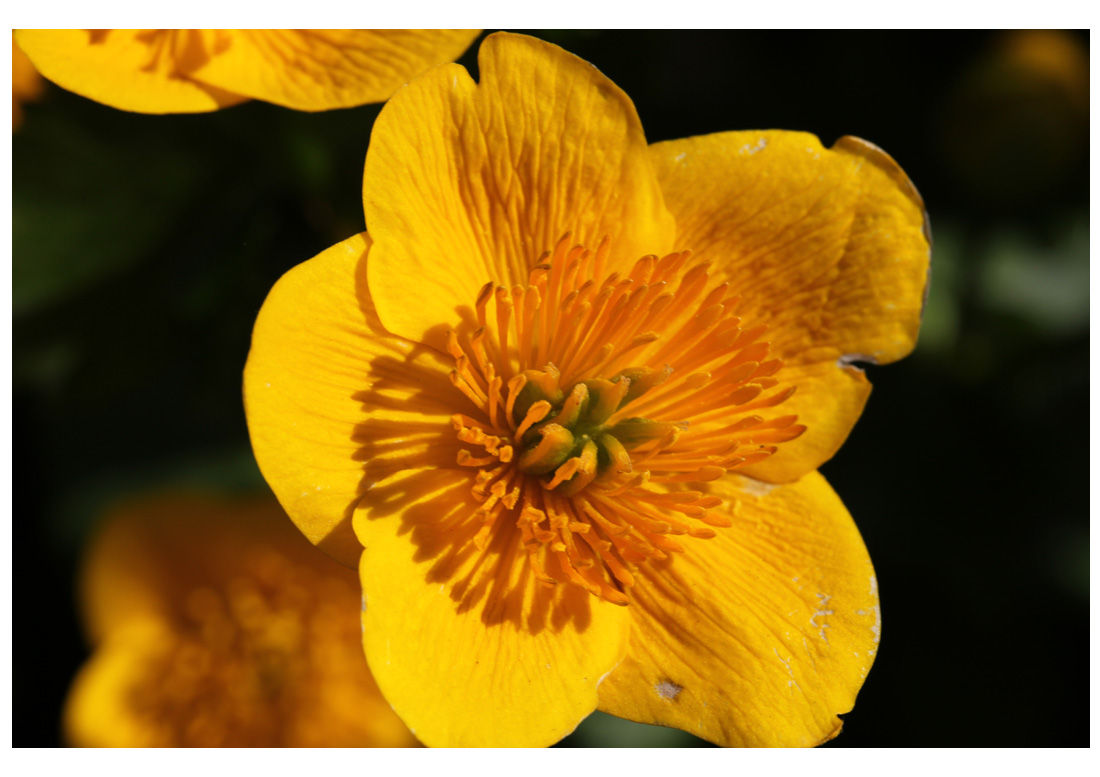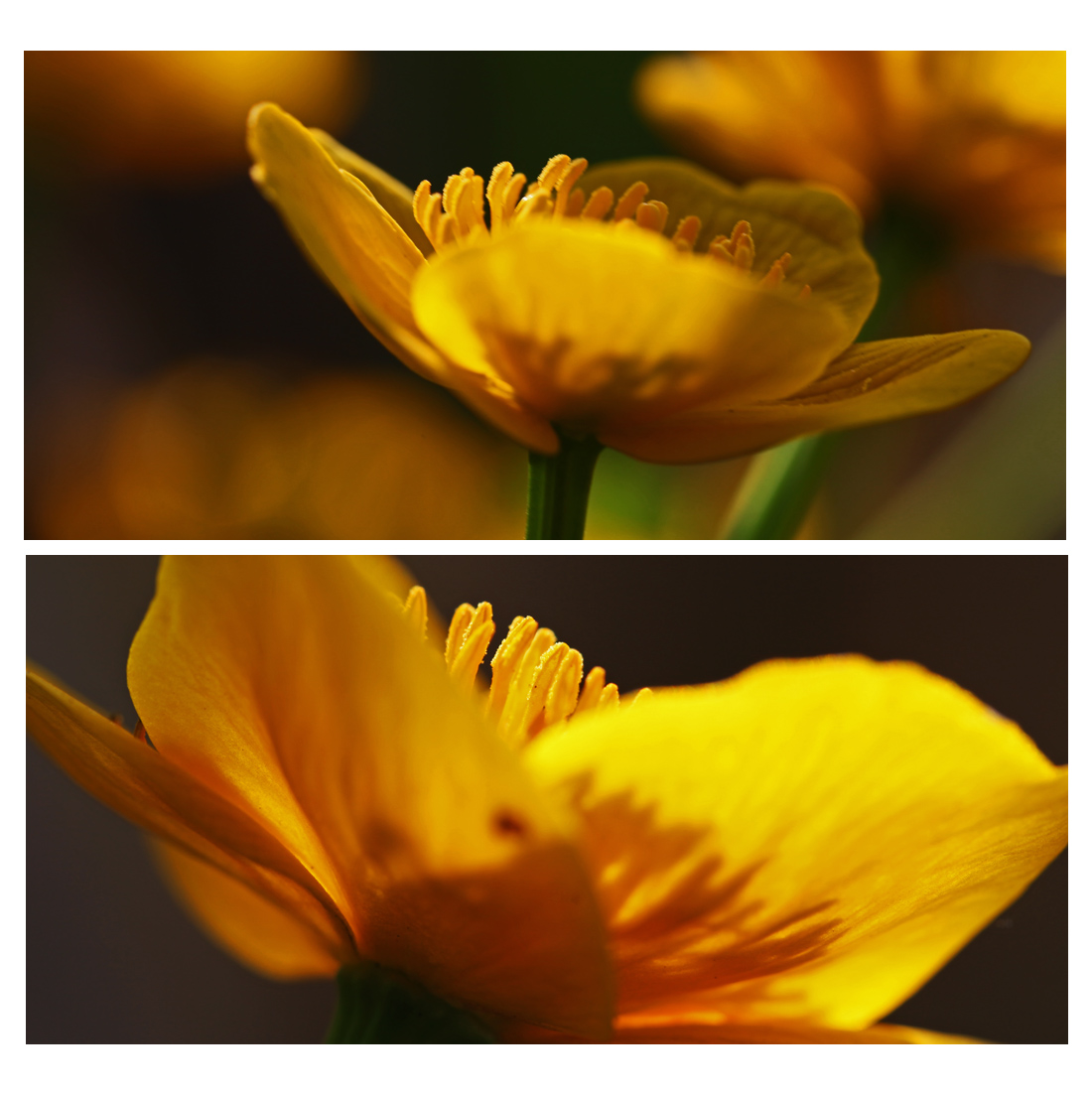There is no other plant of the croplands with such deep golden yellow of petal and stamen set against a backdrop of solid green leaf. The flowering of marsh marigold Caltha palustris in late April means the May cross-quarter day is near, called Beltane in some traditions and mid way between the spring equinox and the summer solstice. Fire festivals are well represented by the sun in its golden cups.
Caltha’s flowers look best when lowly, slanting rays bring out the irregularities of the upper surface of the petals and the granularity of the pollen-bearing anthers. In unison, these anthers, more than 100 in each flower, move on their filaments to face the sun.

Marsh marigold is not threatened as a species in Britain, in that it is still widespread, but it is no longer a common plant in the north – the draining and scouring of ponds and ditches, the erosion of wet habitat, the mis-use of pesticides, all see to that. Yet resilience it has, as the tale below shows.
The Caltha’s tale
Our Caltha plant is much loved by the not-overly-given-to-sentimentality Living Field crew.
While the original origin of Caltha lies a few million years ago, the origin of our Caltha, the one in the garden, lies about 15 years ago before the garden was made. It was found looking very sick on a northern bank, 150 km away, on a farm but well away from a farm field. There had been a few of them (Caltha plants), but they’d been sprayed with herbicide for reasons unaccountable.

Only one was un-dead, and this one, though its stems were curling, was dug out and brought home. It was buried half-submerged in a boggy patch and left to its fate. It weathered the first winter but came up with herbicide-curled stems, then weathered the next, but after a few years it flowered at Beltane with no more curl. (Family members were quizzed as to whether they got the hair-straighteners on it, but no … it was naturally un-curly … it had out-lasted the chemical.)
After a couple more years, it started to bulk out, so it was split, and one of the split-off bits was brought to the garden. And this is the one that is there still, and which is shown in the photographs on this page.
Whatever happens to our bit of Caltha, there are many other clones of the same un-dead Caltha, flourishing in ponds and ditches hereabouts. Long live Caltha! May its cups ever catch the Beltane sun!
[To follow – roots, medicinal properties ….. ]
